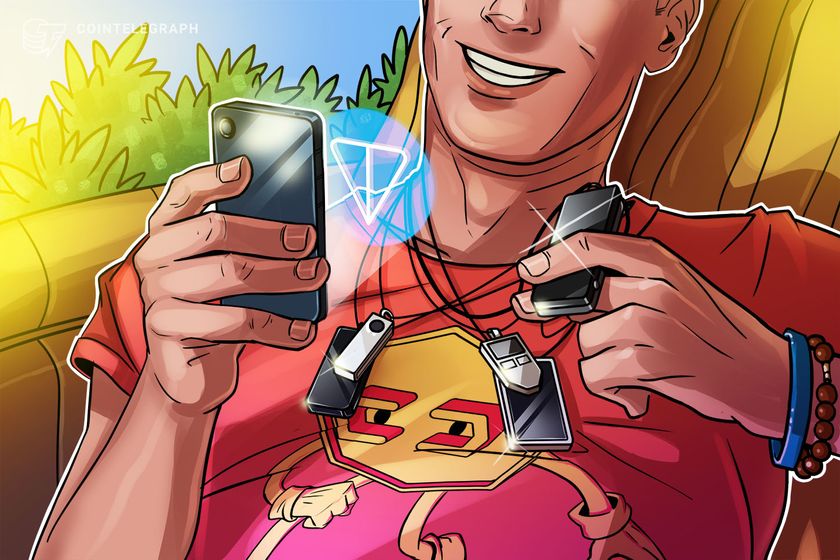Blockchain sounds complicated, but it’s actually pretty simple once you break it down. Today, we’ll explain it in a way that even we could understand—and show you why it matters for DeFi, Web3, and your money.
What is Blockchain?
Imagine a giant notebook that everyone can see but no one can erase or change. Every time you write in it, your entry gets locked in forever and linked to the previous page—forming a chain of blocks (hence, “blockchain”).
🔹 Decentralized – No single person owns it. Instead, thousands of computers (nodes = computers that store the blockchain) keep copies to prevent cheating.
🔹 Tamper-Proof – Once something is recorded, it can’t be erased or changed without everyone noticing.
🔹 Transparent – Anyone can see the history, but only those with special cryptographic keys (like a password) can add new entries.
🚀 What is Blockchain Used For?
Cryptocurrencies (digital money) → Bitcoin $BTC.X ( ▼ 3.68% ), Ethereum $ETH.X ( ▼ 2.95% ), and DeFi apps.
Smart Contracts (self-executing agreements) → Code that runs automatically without a middleman.
NFTs & Digital Ownership → Proof that you own digital art, music, or assets.
Supply Chains & Identity Verification → Tracking goods, preventing fraud.
Think of it as a global, digital trust machine—removing the need for banks, lawyers, and middlemen.
Feature | Traditional Database | Blockchain |
|---|---|---|
Control | Centralized (one entity controls) | Decentralized (multiple nodes verify data) |
Security | Can be hacked/altered | Data is immutable (can’t be changed) |
Transparency | Private access only | Public & verifiable ledger |
Speed | Fast for small-scale use | Slower but more secure |
Trust | Requires a trusted third party | Trustless system |
On-Chain vs. Off-Chain Transactions
📌 On-Chain Transactions
✅ Happen directly on the blockchain.
✅ Verified by all nodes (computers storing the blockchain) using “consensus mechanisms” (systems that confirm transactions, like Proof of Work or Proof of Stake).
✅ Secure & permanent but can be slow and expensive.
Example: Sending Bitcoin to a friend via the Bitcoin network.
⚡ Off-Chain Transactions
✅ Happen outside the blockchain (but settle on it later).
✅ Faster & cheaper but relies on secondary networks (Layer-2 solutions = faster blockchain extensions).
✅ Used for scaling blockchains and reducing transaction costs.
Example: Using the Lightning Network for Bitcoin payments or Polygon for Ethereum transactions.
What is the Lightning Network?
The Lightning Network is a Layer-2 solution for Bitcoin that makes transactions faster and cheaper by allowing payments to happen off-chain before settling on the main Bitcoin blockchain.
💡 Think of it like a bar tab—instead of paying for every drink individually, you settle everything at the end.
🚀 Why It Matters: The Lightning Network makes Bitcoin usable for everyday purchases, removing long wait times and high fees.
Feature | On-Chain Transactions | Off-Chain Transactions |
|---|---|---|
Recorded on blockchain? | ✅ Yes | ❌ No (until settlement) |
Speed | Slower | Much faster |
Cost | Higher fees | Lower fees |
Security | Fully secure | Relies on intermediaries |
Example | Sending Bitcoin via main network | Lightning Network, Polygon |
Blockchain Trends You Need to Know (March 2025)
🔋 Energy-Efficient Blockchains → Proof-of-Stake chains (which require staking instead of mining) now dominate, cutting energy use by 99% compared to Bitcoin.
⚡ Layer-2 Scaling Solutions → Base, Mantle, Arbitrum, and Polygon are making Ethereum faster and cheaper.
🎟️ Tokenization of Real-World Assets (RWAs = digital versions of physical assets) → Real estate, stocks, and even gold are being turned into blockchain-based tokens for easier trading.
🆔 Digital ID on Blockchain → Governments and businesses are moving toward blockchain-based identity verification (secure online IDs) for security and fraud prevention.
💰 Bitcoin’s Lightning Network Grows → More businesses and merchants are accepting Bitcoin via Lightning, making it a serious competitor to traditional payment networks like Visa.
How You Can Use Blockchain Today
For Individuals:
✅ Use Layer-2 networks (Base, Mantle, Polygon, Arbitrum) for cheaper and faster crypto transactions.
✅ Explore DeFi (decentralized finance = banking without banks) → Earn passive income through staking and lending.
✅ Try blockchain-based ID services → Some wallets now offer identity verification for extra security.
✅ Test Bitcoin’s Lightning Network → Apps like Strike and Wallet of Satoshi let you send BTC instantly with almost no fees.
For Businesses & Investors:
✅ Adopt blockchain in supply chains → Verify goods transparently.
✅ Look into tokenized assets → Real estate, stocks, and commodities are moving on-chain.
✅ Use blockchain for secure payments → Settle transactions instantly without banks.
✅ Consider accepting Bitcoin payments via Lightning → Faster than credit cards with lower fees.
The Takeaway
Layer-1 vs. Layer-2 vs. Layer-3 :
Layer-1 (Base Blockchain) → Ethereum, Bitcoin, Solana
Layer-2 (Scaling Solutions) → Polygon, Base, Arbitrum, Lightning
Layer-3 (App-Specific Layer) → Orbs, StarkEx, Custom Rollups
Blockchain is not just about crypto—it’s changing how money, ownership, and trust work online. Whether you’re an individual or a business, adapting to blockchain now puts you ahead of the curve.
🚀 Want more insights on how to profit from blockchain tech? Stay tuned for our next issue.
Stay ahead,
CryptoNuggs



